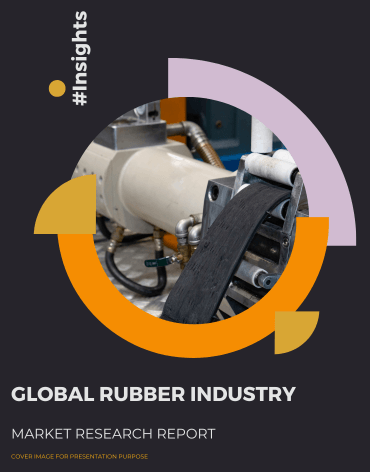The global rubber industry is a testament to human innovation, economic interdependence, and environmental sustainability. From its humble beginnings as an indigenous curiosity to its current role as a vital component of various industries, the journey of rubber has been marked by remarkable transformations and challenges. In this article, we delve into the evolution, current dynamics, and prospects of the global rubber industry.
Rubber's journey began centuries ago in the rainforests of South America, where indigenous cultures first discovered its flexible and water-resistant properties. The material's potential piqued the interest of European explorers, leading to its introduction in Europe during the 16th century. However, it wasn't until the 19th century that rubber gained industrial significance with the invention of vulcanization by Charles Goodyear, a process that rendered rubber durable and practical for various applications.
The 20th century witnessed a surge in rubber's importance as a critical industrial material. The automobile industry's expansion and the demand for tires transformed rubber into a global commodity. Similarly, the growth of the aviation sector further amplified rubber's significance in the form of aircraft tires and components. Moreover, rubber found its way into various consumer products, from footwear to industrial machinery components.
Rubber exists in two primary forms: natural rubber and synthetic rubber. Each type possesses unique characteristics, production methods, and applications. In this article, we explore the differences and similarities between natural rubber and synthetic rubber.
Natural Rubber
Natural rubber, also known as latex, is derived from the sap of the rubber tree (Hevea brasiliensis) primarily found in tropical regions such as Southeast Asia. The rubber extraction process involves tapping the trees, collecting the latex, and processing it into usable forms. Natural rubber exhibits impressive elasticity and resilience, making it ideal for applications where flexibility and durability are essential, such as in tires, footwear, and industrial products.
Synthetic Rubber
Synthetic rubber, on the other hand, is manufactured through chemical processes using various raw materials, including petroleum derivatives. This type of rubber was developed as an alternative to natural rubber, especially during times of natural rubber shortages. Synthetic rubber can be tailored to exhibit specific properties, such as resistance to heat, chemicals, and wear. This customization has created a wide array of synthetic rubber variants suitable for specific applications, including neoprene for wetsuits, nitrile rubber for gloves, and styrene-butadiene rubber (SBR) for tires.
In 2022, the global rubber market recorded a substantial size of US$ 46.61 billion. Projections indicate a remarkable expansion, with the market poised to attain a revised size of US$ 80.38 billion by 2029, reflecting a noteworthy Compound Annual Growth Rate (CAGR) of 8.0% during the projection period spanning from 2023 to 2029.
Prominent players in the global rubber landscape encompass Von Bundit, Sri Trang Agro-Industry, Southland Holding, Thai Hua Rubber, and Vietnam.
The global rubber industry's supply chain is complex and interconnected. While natural rubber remains essential, synthetic rubber production has grown significantly. Major rubber-producing countries include Thailand, Indonesia, and Vietnam, contributing a substantial portion of the world's natural rubber. Additionally, synthetic rubber production is prominent in countries like China, the United States, and Japan. Fluctuations in supply, geopolitical factors, and environmental challenges can impact the industry's stability.
Rubber, in its various forms, plays a crucial role in shaping industries around the world. From enhancing automotive performance to enabling critical medical procedures, rubber's versatility knows no bounds. In this article, we delve into the detailed applications of rubber across the automotive, medical, industrial, and consumer goods sectors.
Automotive Industry
- Tires: Tires are perhaps the most well-known application of rubber in the automotive industry. Rubber's elasticity and durability make it the perfect material for providing traction, shock absorption, and a comfortable ride.
- Seals and Gaskets: Rubber seals and gaskets are used throughout vehicles to prevent leaks and ensure airtight compartments. These components play a vital role in maintaining the integrity of engine systems, transmissions, and fluid reservoirs.
- Belts and Hoses: Rubber belts drive various engine components, such as the alternator and water pump. Rubber hoses transport fluids like coolant and brake fluid, withstanding high temperatures and pressures.
- Bushings and Mounts: Rubber bushings and mounts isolate vibrations and dampen noise, enhancing the comfort and stability of the vehicle.
Medical Industry
- Medical Gloves: Disposable medical gloves, often made from latex or synthetic rubber like nitrile, provide a barrier against contaminants during procedures, ensuring safety for both patients and healthcare professionals.
- Medical Devices: Rubber is used in a variety of medical devices, including catheters, syringe plungers, and seals for IV bags. These applications demand biocompatibility, durability, and flexibility.
- Implants and Prosthetics: In some cases, medical-grade rubber is utilized for implants and prosthetics due to its compatibility with human tissues and the ability to mimic natural movement.
- Surgical Equipment: Rubber components in surgical instruments and equipment, such as O-rings and seals, ensure precision and sterility during procedures.
Industrial Sector
- Conveyor Belts: Industrial rubber conveyor belts transport materials across factories, warehouses, and production lines, relying on rubber's durability and resistance to wear.
- Seals and O-rings: Rubber seals and O-rings are integral to maintaining the integrity of various industrial systems, preventing leaks and maintaining pressure.
- Hoses and Tubing: Rubber hoses and tubing carry fluids and gases in industrial settings, often requiring resistance to harsh chemicals and extreme temperatures.
- Vibration Dampening: Rubber is used in machinery mounts and isolators to dampen vibrations, reducing noise and enhancing the lifespan of equipment.
Consumer Goods
- Footwear: Rubber's water resistance, flexibility, and durability make it a staple in footwear, from everyday sneakers to specialized work boots.
- Sports Equipment: Rubber is found in sports balls, protective gear, and even the soles of running shoes, providing shock absorption and grip.
- Inflatables: From balloons to inflatable mattresses and life rafts, rubber's airtight properties make it an essential material for products that require inflation and deflation.
- Household Items: Rubber is used in a multitude of household items such as gloves for cleaning, rubber bands for organization, and door seals for insulation.







